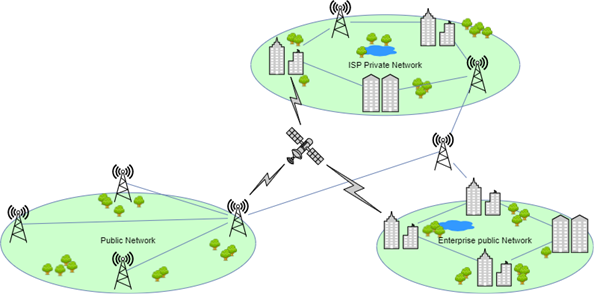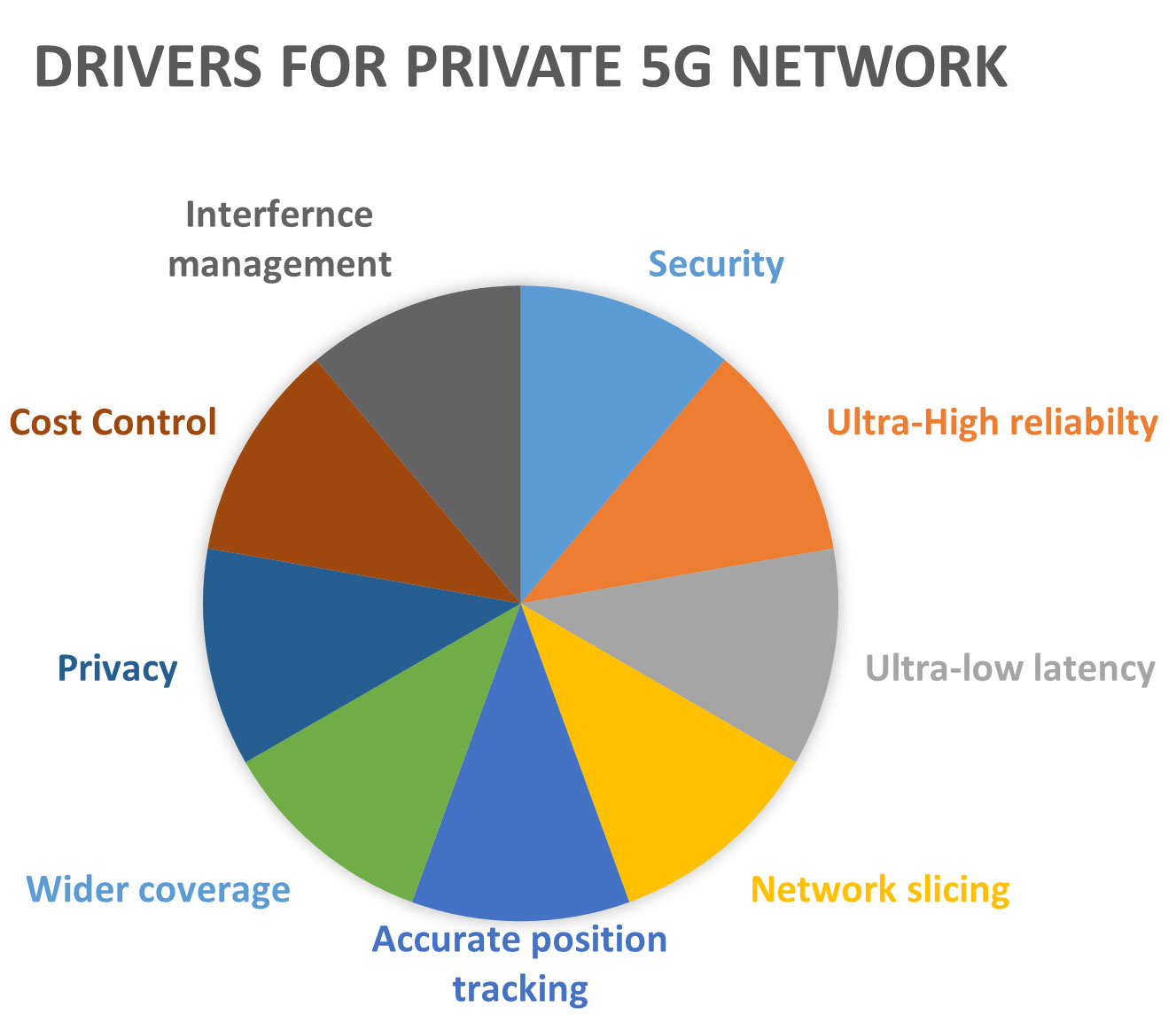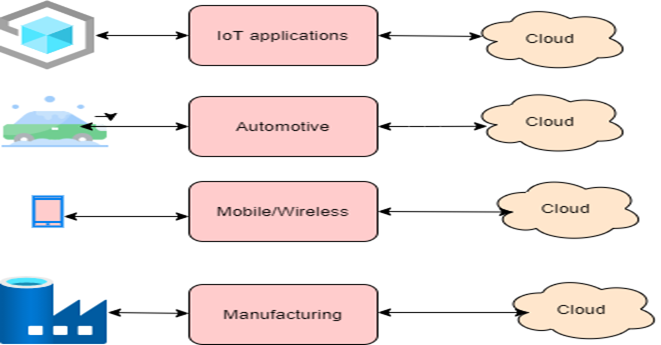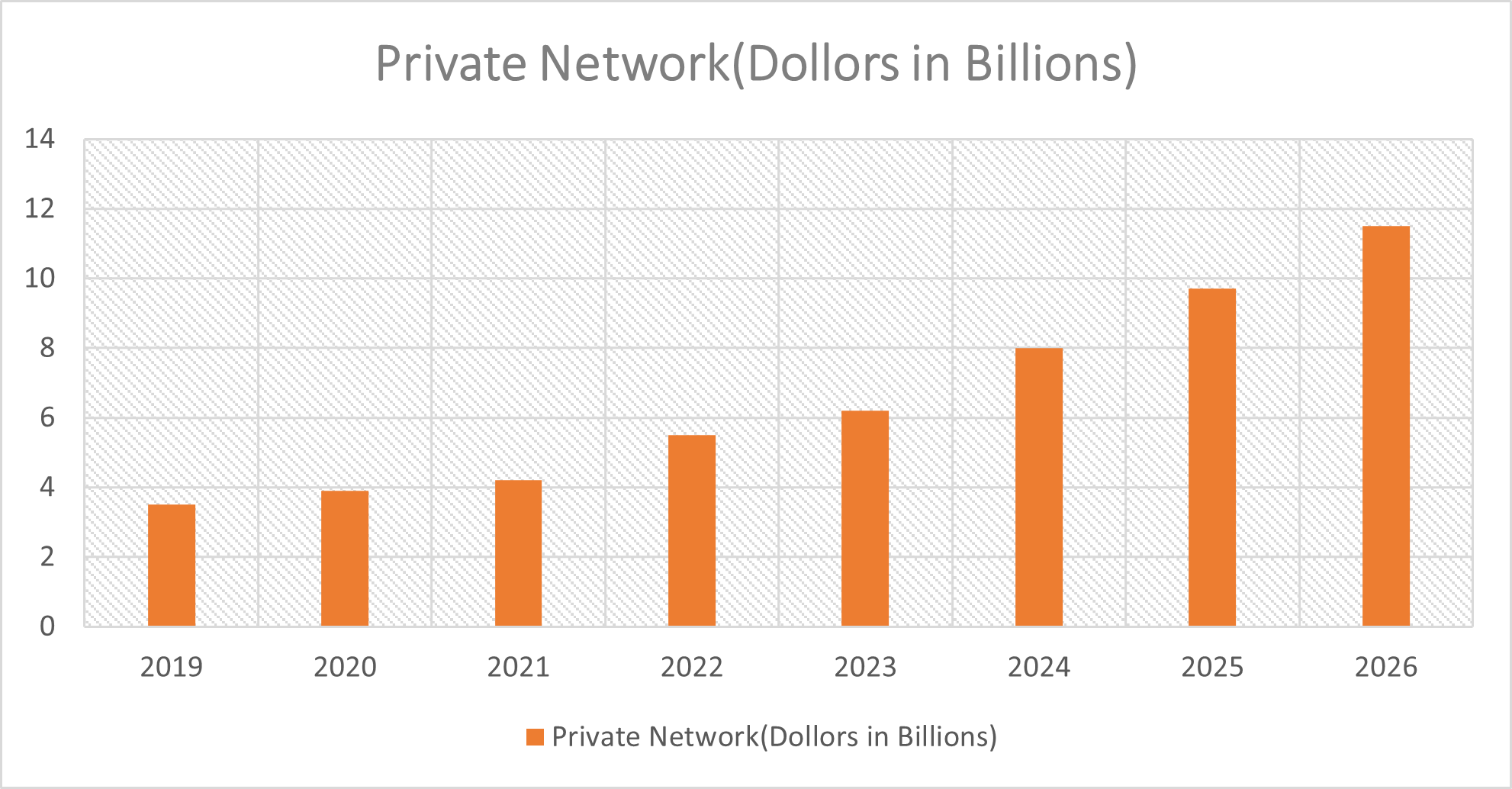As more devices get connected to the 5G cellular network, enterprises may face network traffic bottlenecks and security-related issues. This may require a concept like network in a box, which will yield high reliability and low latency.
These requirements of realiabilty and latency will be fulfilled by a private 5G network that can drive innovation, such as improved automation, better visibility into the supply chain, and new ways to deliver enhanced customer experiences. Private 5G, which can be considered a next-generation network service, could make all the difference.
Despite its potential to be a game-changer, most organizations still have questions around private 5G, such as what is a private network? What is the difference between private 5G cellular and a public 5G cellular network? Critical capabilities of private 5G?
Private cellular network
A private cellular network (PCN) is nothing but a reliable network solution as a standalone or isolated solution for enterprises or factories.
Technically, private cellular networks and public cellular networks work in similar fashion. The end devices use a wireless or wired network to transfer data between base stations or many cloud applications and transmit data back to the end devices.
The difference between private and public networks is that the end devices on a public network transfer data using an exclusively licensed spectrum. When enterprises use a private network, they control the network within the limited geographical area with optimized services using dedicated devices. Even today, we have many established private networks with wired Ethernet or Wi-Fi connections.
However, in a private network, architecture wise, we have two types – (i) integrated private network and (ii) independent private network.
In an integrated private network, the data network elements (specifically used for data transmission) like gateways, firewalls, local services, and radio access networks (RAN) are under the control of the enterprises and placed on-premises. A public operator manages the control network elements (used explicitly for control) like policy servers, databases, and IP Multimedia subsystem (IMS).
In an independent private network, the enterprises manage all the data network elements and the control network elements. Interconnection with a public network/operator is optional.

Many industries such as Automotive, Healthcare, Oil and Gas, and domain-specific services are in their digital transformation phase. Let’s take the example of the automotive industry. As the automotive industry moves towards connected vehicles and autonomous vehicles, these become end devices of a network transceiving many types of data such as location or GPS data, traffic, and weather information, and data from the many sensors in the vehicle. The healthcare industry uses end devices like robots for critical operations and many IoT devices to connect with patients and to track medical elements like wheelchairs and oxygen pumps in real-time.
Most of these industries thrive on real time data transfer along with secure data storage, which requires a highly reliable network connection.
Existing private networks that use ethernet connections and Wi-Fi have their own limitations. Ethernet connections can be cost effective but cannot provide mobility, and the construction cost and time taken to set up the network is high.Wi-Fi connections are easy to construct, but mobility is limited, and they may face security issues. Existing private network also have limitations on bandwidth hence enterprises can connect only limited number of end devices and could also face network conjuction issues.
A new age of private network, private 5G technology will overcome the limitations of the existing ethernet/wifi/4G based network. Private 5G network is having wider bandwidth as comapred to 4G private network which allows to connect more devices and with less network conjuction. In 5G there will be wireless base stations(small cells) with many antennas, which will replace the messy wirres, which automatically reduces the setup time and increse mobility.
Apart from these benefits, there are also some key drivers that we will have to understand.
RELATED BLOG
Drivers for private 5G
Let us evaluate some of the key drivers of private 5G network that appear in future roadmap for enterprises.

● Ultra-high reliability
Many industries require 99% network reliability, and this is a challenge to achieve with existing private networks. A 5G network with CoMP (Coordinated Multiple Points) technologies increases reliability and addresses this need.
Private 5G networks have many transmitters and receivers organized in small cells that transfer user data to the nearest receiver node. Private networks thus face less interference as compared to public 5G networks. Besides, the transmitters and receivers have data feedback capability enabling them to share the channel condition. This approach promises reliability with private 5G network.
● Accurate position tracking
The supply chain industry, which needs to track inventory or products and other information such as the arrival and delivery time of goods, requires high accuracy in tracking, which is difficult in the current scenario. However, with the help of the 5G network’s Massive MIMO (Multiple Input Multiple Output) technologies, we can have more accuracy.
● High Security
The fifth generation of networks is more secure than the 4G LTE network because it has identity management, privacy, and security assurance. Private 5G also has a network-slicing feature that allows enterprises to establish robust security policies and exercise control at each network slice.
● Multipath for data transmission
5G networks have beamforming technology that allows a more direct connection that is faster and more reliable. According to networkedworld.com, Beamforming is a technique that focuses a wireless signal towards a specific receiving device, rather than having the signal spread in all directions from a broadcast antenna, as it normally would. When one data path is blocked or not available, the data routes to another, ensuring seamless data transmission. This multipath for transmission is very useful in a private 5G network where many devices simultaneously communicate with other devices, hubs, or gateways.
● Quality of data transmission
Network slicing is nothing but creating a virtual network on the base of the public network by dividing the network logically as per the application. The idea of network slicing originated from software-defined networking (SDN) and has become a key component of the 5G network.
By slicing the network and creating an isolated network, we can control the density and interference of each layer individually, automatically increasing the reliability and speed while decreasing latency for data transmission.

Conclusion
The features, flexibility, and ease of operations made possible by the features discussed above make 5G networks the natural choice for widespread adoption while deploying private networks. We anticipate healthcare, oil & gas, education, manufacturing, and the automobile industries to be at the forefront of adopting this. Consequently, we expect spending on 5G private networks to increase to between 10 and 12 million dollars by 2026.

According to RCR Wireless News, “Over the next ten years, we expect Private 5G networks to lead innovation in many ways, including virtualization and the use of “openness” for simple and scalable software.” The integration of private 5G and edge computing is likely to be tighter and more effective than in legacy telecom networks. In time, we can expect the private 5G world to bring these key innovations back into public 5G networks, creating benefits for everyone.
eInfochips provides a wide range of services to the telecommunication industry, including solutions based on 4G and 5G to help organizations build highly-customized solutions. eInfochips has an intricate understanding of different platforms and 25 years of end to end product development experience. For more information on implementing 5G based solutions please contact us today.













